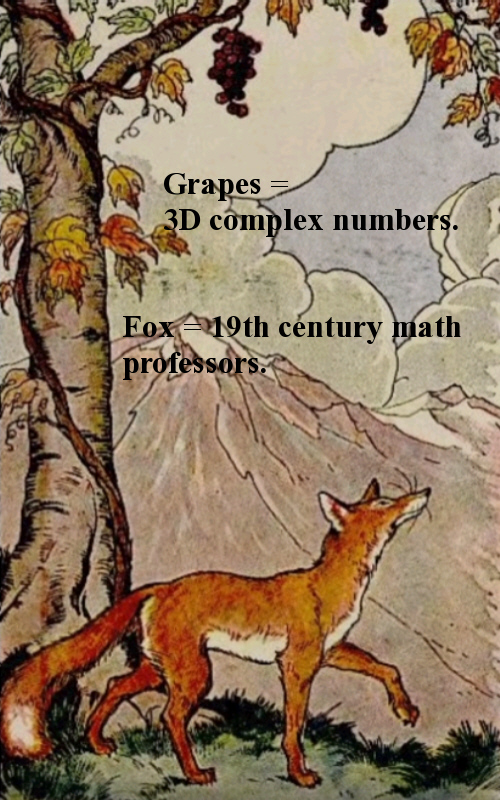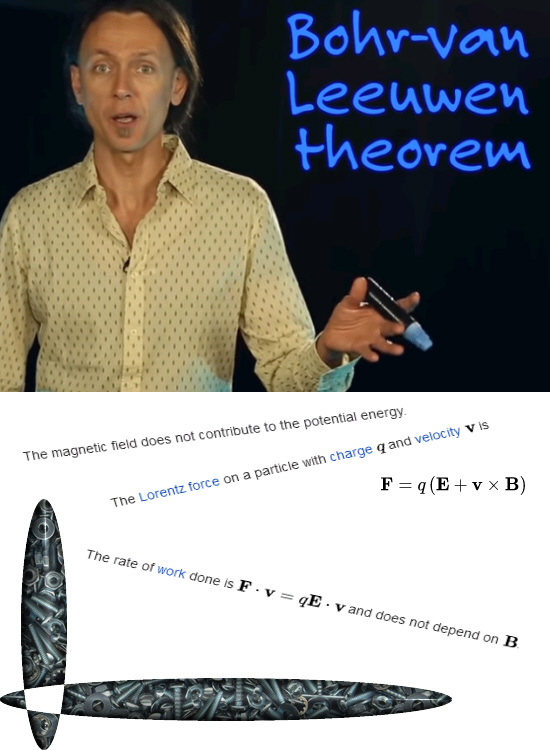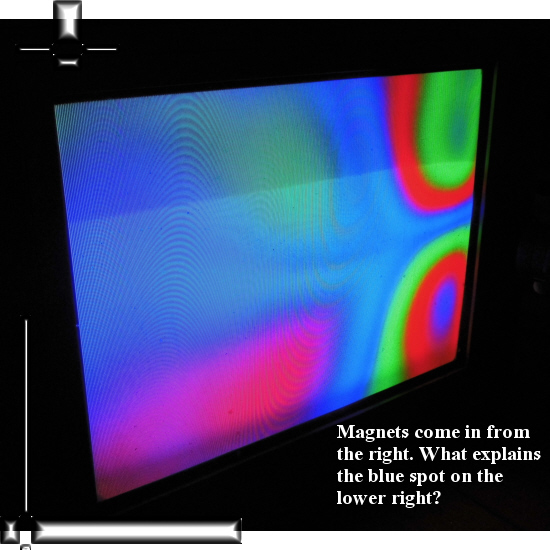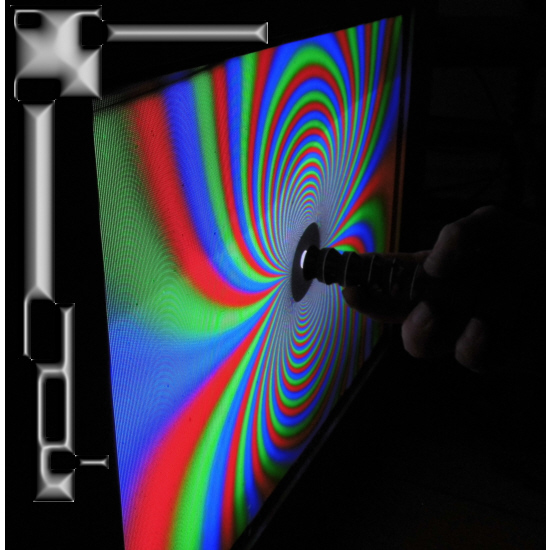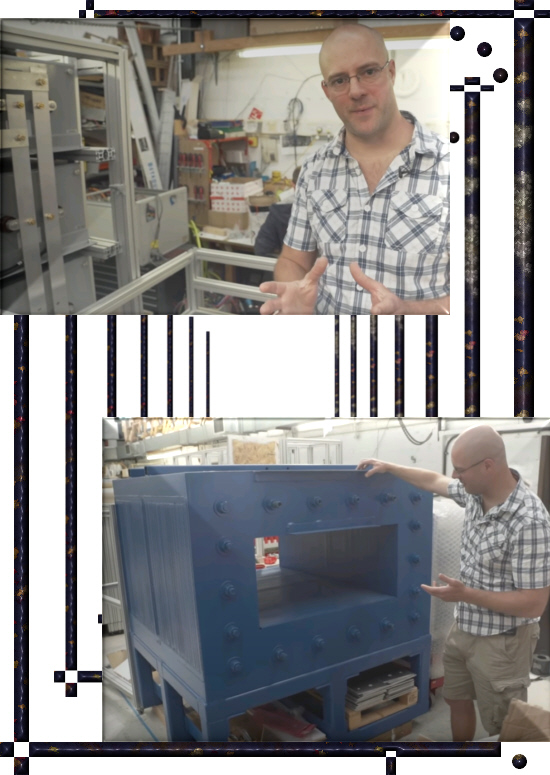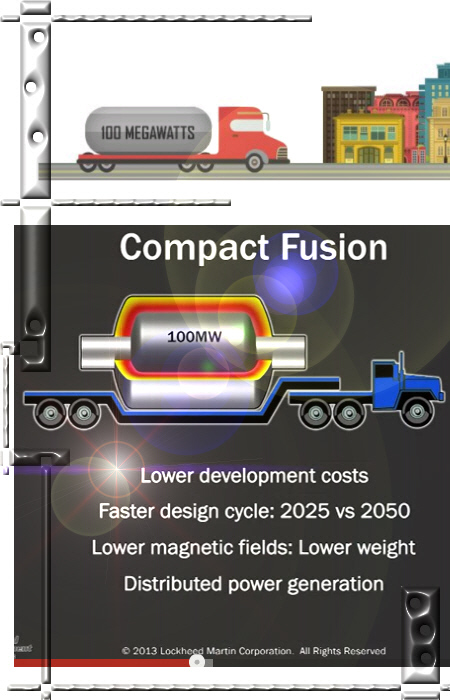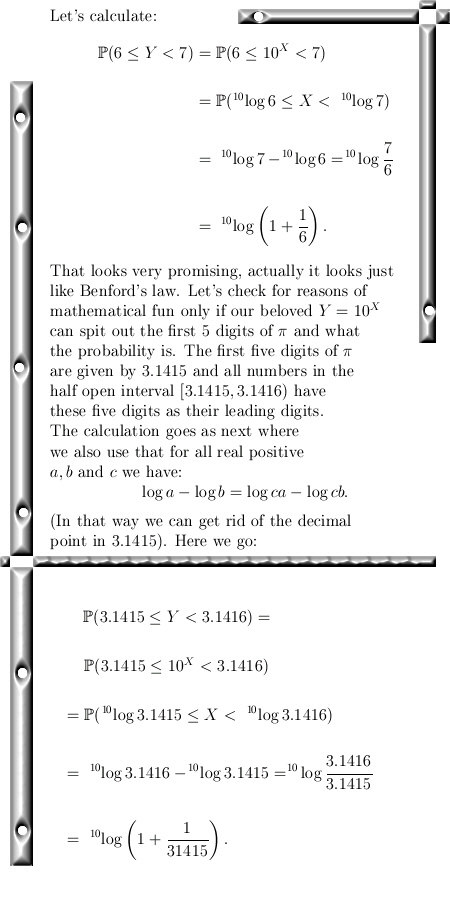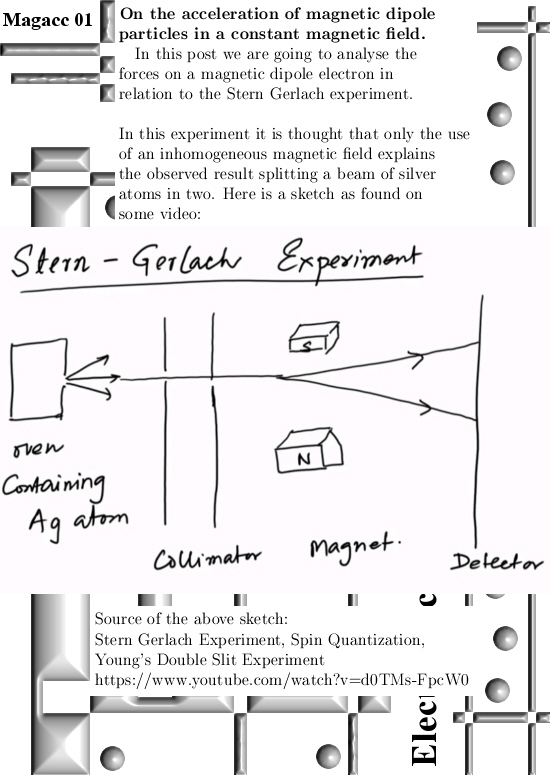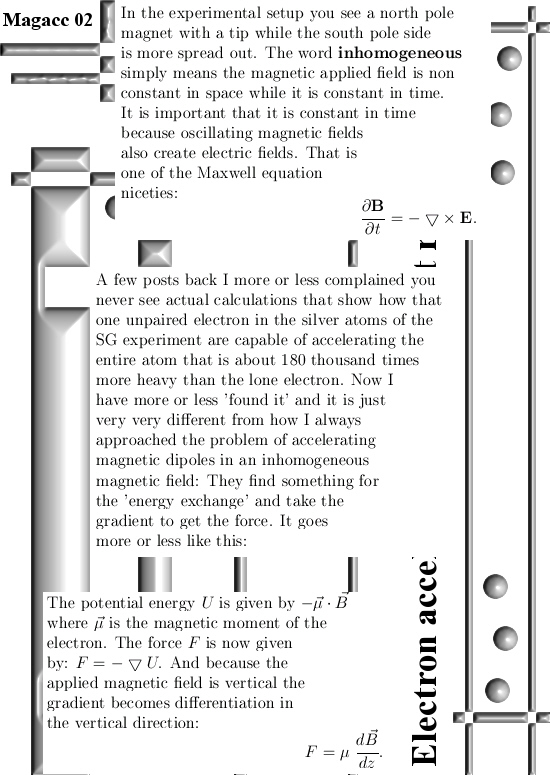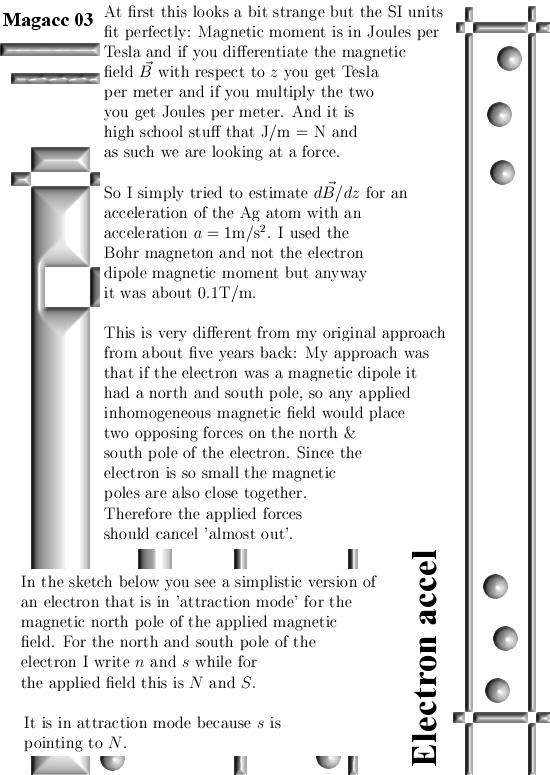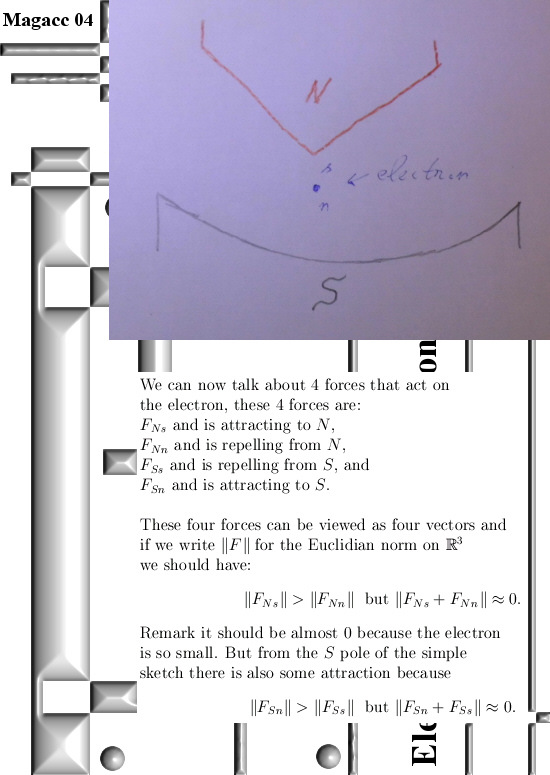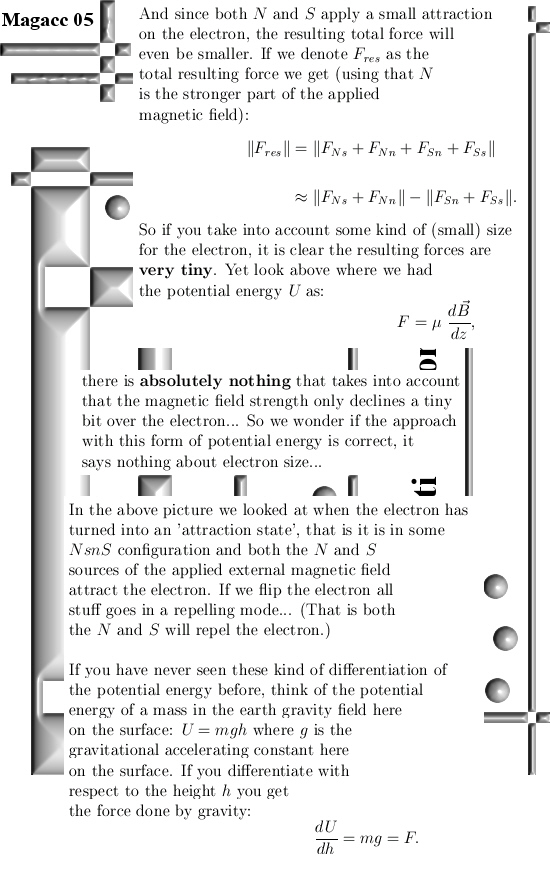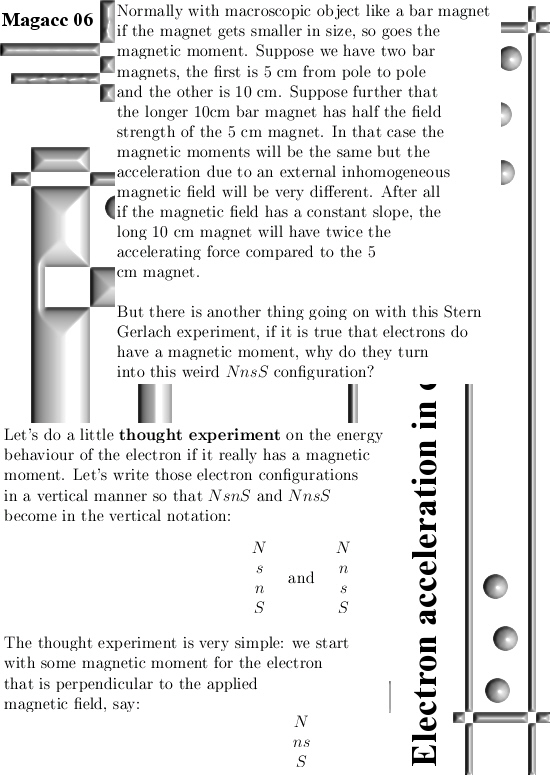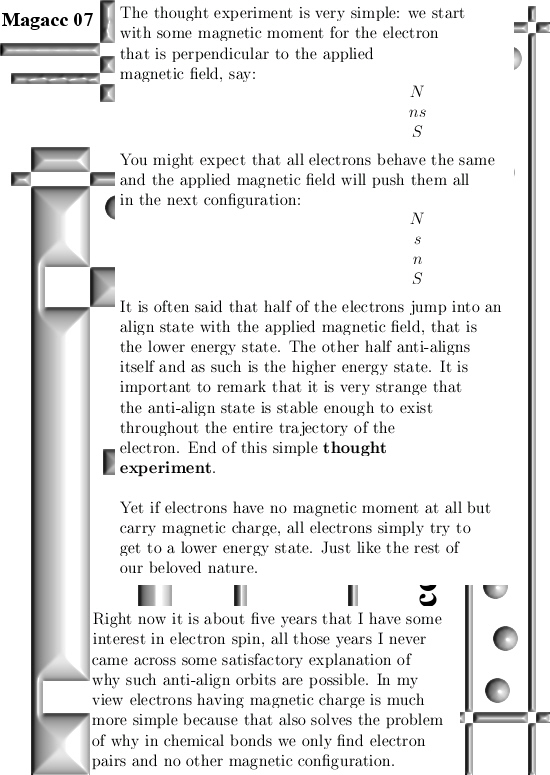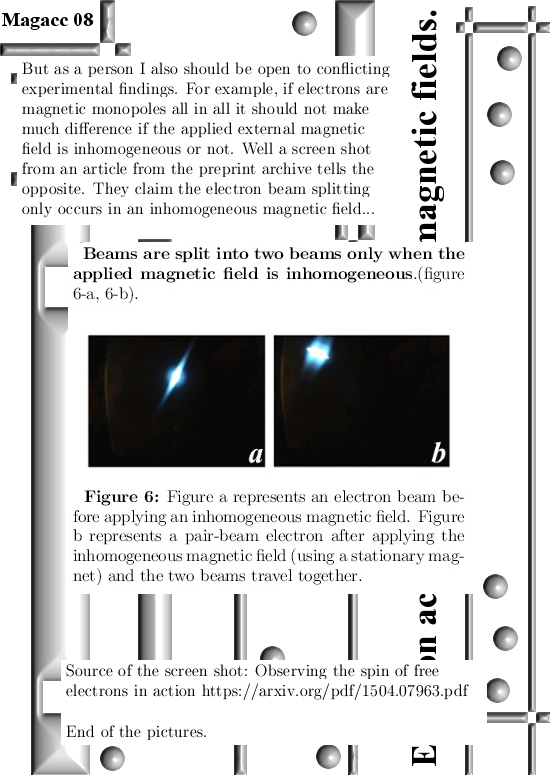I am always baffled by those folks explaining this important experiment; why do they not see that the explanation offered is just 100% bs? It could be that in physics there are all kinds of ‘patches’ that explain particular parts of magnetism. Let me write two of those patches down:
Patch 1: Since in the Stern Gerlach experiment a beam of silver atoms was split in two under the application of a magnetic field, the ‘logical explanation’ offered is always that when electrons enter a vertically applied magnetic field, 50% will have spin up and 50% is spin down. If the applied magnetic field is turned 90 degrees, say horizontal, again both beams will split again in 50% left spin and 50% right spin.
Patch 2: Making permanent magnets. A magnetic field is applied to some metal and now all unpaired electrons always align with the applied magnetic field. Sometimes the explanation is a bit more advanced; at first it is explained that in the magnetic domains of say iron all spins are aligned and when making it into a permanent magnets all the magnetic domains align according to the applied (strong) magnetic field.
On their own such ‘explanations’ might sound logical, but if you combine them you get total rubish. It cannot be that one the one hand if you apply a magnetic field 50% of the unpaired electrons anti align and the other 50% align with the magnetic field while on the other hand always 100% of unpaired electrons align nicely when you make a permanent magnet. Such ‘explanations’ or patches of knowledge should enforce each other, but here it gives total bs. Either it is always 50/50 or it is always 100% alignment, why do those professional physics folks never observe that tiny part of physical reality? In my view they cannot go outside the patches, the reasoning always stays local inside that particular patch (explaining the SG experiment versus making permanent magnets).
The 50/50 patch that should explain the Stern Gerlach experiment is always very strange if you just keep an iron nail next to a magnet; wow man it gets attracted! But if 50% of the unpaired electrons in that nail would anti-align and the other half would align, what would explain the attraction? In my view people like that a weird beyond comprehension.
At Fermilab the honorable Don Lincoln often explains all kind of physical things, his style in doing so is often a bit too arrogant in my view. If you want to study physics you must be humble and always operate from the fact you only have a human brain. So being an arrogant overpaid jerk is a quality you must loose; that human stuff will ensure you will never understand physical things because it prevents you to think a bit deeper on it when for example you try to check if you could be wrong…
The video is on more items, not only the SG experiment but also the Einstein-Rosen-Podolski paradox, the creation of an electron-positron pair from a spin 0 particle & more of that stuff. I made two pictures from two screen shots. By all standards it is hilarious because what spin 0 particle are we actually talking about? Of course that is not mentioned, with just a tiny bit of arrogant behavior it is simply stated and you as an onlooker of that video are supposed to bow for the wisdom of Don Lincoln…
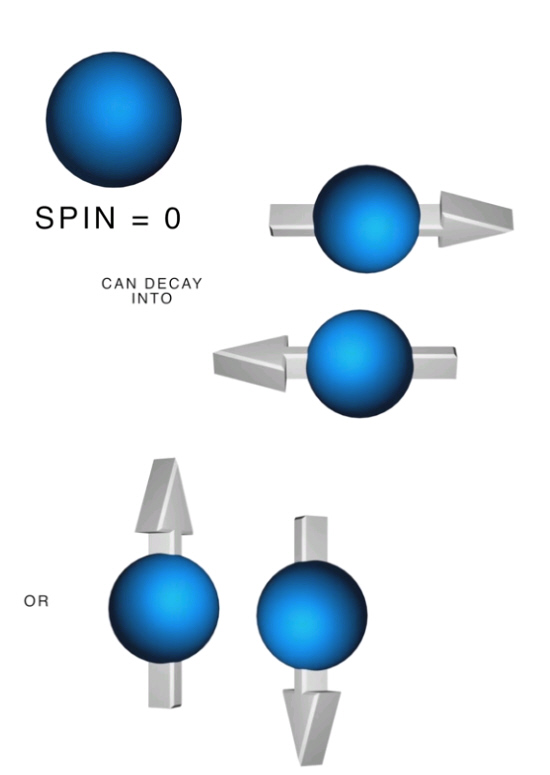
Please remark I have no experimental evidence that if electrons are magnetic monopoles, there is conservation of total magnetic charge just like with electric charge. I think it is the case but you also have constantly those physics people explaining that you can flip electron spin with micro waves. But all those patches they try to explain, for example spin flip inside a qbit for quantum computing, can also be the result of electron change. There are always more electrons in the surrounding and if you apply some micro wave radiation it could very well be that you ram out the anti aligning electron that simply gets replaced by an electron of the opposite magnetic charge. After all I have never ever seen an experiment where there is only one electron trapped in isolation and after a short pulse of em radiation it has changed it’s spin.
Ok, let us go on with the hilarious stuff:
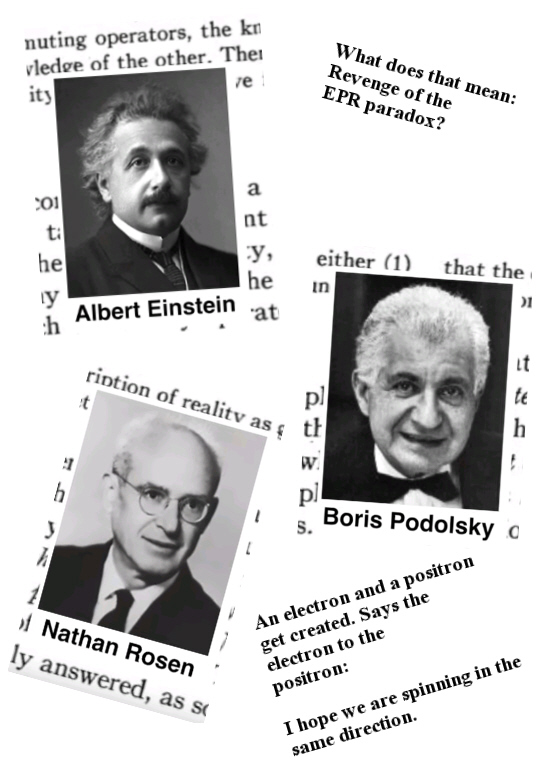
Ok, let’s go to the video itself. The Lincoln guy is a bit irritating because of his arrogant attitude, but it is soon funny & hilarious when he props up his 50/50 spin alignment nonsense. For me it is funny because if electrons carry magnetic charge, a more or less conservative estimate as when the professional physics professors will find that out is about 5000 to 5 million years into the future.
Just like the speed math professors understand a bit more upon 3D complex numbers.
Title of the video: Quantum Entanglement: Spooky Action at a Distance.
Ok that was it for this post, think well and work well.
Updated on 18 March 2020: Lately I found a cute video from Veritaisum and the MinutePhysics guy where indeed they use both patches of ‘explanation’ in just one video. The Stern-Gerlach experiment is explained via electrons doing the 50/50 thing while for permanent magnets all electrons align & we can safely conclude these guys are lunatics.
But if you look at other video’s of Veritasium & the MinutePhysics guy, they often look so smart and it all looks like they have more or less healthy brains… These guys are not idiots and that leaves we with a big question I still have: Why do the people of physics never understand that separate patches of human knowledge should enforce each other?
Why do these two guys not see that giving two explanations is highly contradictionary? If you have a permanent magnet in your hands and you approach a piece of iron, if 50% of the electrons align and the other half anti-align, iron would not be magnetic. But Iron is very magnetic as any body knows, so why do weirdo’s like Veritasium & the MinutePhysics guy not see that? Here is that cute video from two idiots not capable of seeing their wisdom is not perfectly optimesed:
Ok, let’s close this post for the second time.
